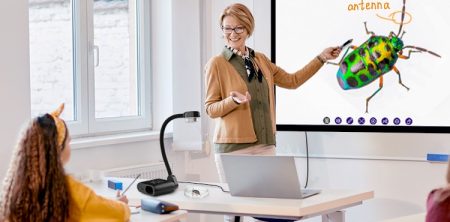The modern classroom has evolved significantly from the traditional setting of textbooks and lectures. Today’s innovative teacher often looks beyond conventional resources to engage students, with kids animated shows emerging as surprisingly versatile educational instruments. What might initially appear as mere entertainment can, in skilled hands, transform into powerful vehicles for academic and social-emotional learning.
The transformation of animated content from entertainment to education begins with intentional selection. Experienced educators don’t randomly choose animated shows but carefully evaluate them for educational value, age-appropriateness, and alignment with curriculum objectives. They look for productions that embed accurate information, demonstrate positive values, and present diverse perspectives—elements that can be leveraged for meaningful learning experiences.
This process of educational adaptation requires a unique set of skills that many teachers have mastered. First, they identify the learning opportunities within a show—whether these are explicit educational messages or implicit themes that can spark discussion. Then, they develop strategic pausing points for reflection and questioning. Finally, they create follow-up activities that reinforce and expand upon the concepts presented in the animation. Through this methodical approach, entertainment becomes a gateway to deeper learning.
The effectiveness of animated shows as teaching tools stems partly from their ability to present complex information in accessible ways. Abstract concepts that might be difficult to explain verbally can be visually demonstrated through animation. For example, cellular processes in biology, mathematical transformations, or historical events can be visually represented in ways that make them more comprehensible to young minds. Teachers capitalize on these visual explanations to introduce and reinforce challenging academic concepts.
Beyond academic content, animated shows often contain rich material for social-emotional learning. Characters face challenges, make decisions, experience consequences, and navigate relationships—all elements that teachers can highlight to promote discussion about emotions, ethics, and social skills. When a beloved character demonstrates resilience in the face of failure or shows empathy toward others, these moments become powerful teaching opportunities that resonate with students more strongly than abstract lectures on the same topics.
Teachers also recognize the value of animated shows in developing critical media literacy skills. By analyzing how stories are constructed, characters are portrayed, and messages are conveyed, students learn to become thoughtful consumers of media rather than passive recipients. Skilled educators guide students in questioning stereotypes, identifying biases, and evaluating the accuracy of information presented in animated content—skills that are increasingly essential in our media-saturated world.
The integration of animated shows into education isn’t limited to viewing sessions. Innovative teachers extend the learning through creative activities inspired by the content. Students might write alternative endings to episodes, create their own animated stories addressing similar themes, or engage in dramatic play that expands upon the animated narratives. These extensions deepen engagement with the educational concepts and promote creative thinking and collaboration.
For subjects that students typically find challenging or intimidating, animated content can provide an inviting entry point. Mathematics, often approached with anxiety by many students, becomes more approachable when presented through the adventures of animated characters applying mathematical concepts to solve problems. Similarly, complex scientific theories or historical events become more engaging when presented through narrative animation rather than dry textbook descriptions.
Multilingual classrooms benefit particularly from the strategic use of animated content. Visual storytelling transcends language barriers, providing context that supports language acquisition. Teachers of English language learners frequently report that well-chosen animated content helps students develop vocabulary, understand idiomatic expressions, and gain cultural context—all while engaging with the same material as their native-speaking peers.
The effectiveness of animation in education extends to students with diverse learning needs. Teachers working with students on the autism spectrum, for instance, often find that animated shows with clear emotional expressions and explicit social scenarios provide valuable models for understanding social interactions. Similarly, students with attention difficulties often demonstrate improved focus when educational content is presented through the dynamic and visually stimulating medium of animation.
As technology advances, teachers are finding even more innovative ways to incorporate animation into education. Some educators now guide students in creating their own animated content as learning projects. Through this process, students not only deepen their understanding of subject matter but also develop technical skills, storytelling abilities, and collaborative work habits—all valuable competencies for the 21st-century workforce.
Professional learning communities increasingly share best practices for educational use of animated content. Online platforms allow teachers to exchange viewing guides, discussion questions, and extension activities related to popular educational animations. This collaborative approach helps educators maximize the educational potential of animated shows, even those without explicit educational mandates.
In conclusion, the transformation of animated entertainment into educational tools represents a testament to teachers’ creativity and understanding of how children learn. By thoughtfully selecting, presenting, and extending animated content, educators harness the motivational power of entertainment while achieving substantial educational objectives. As both animation technology and educational research continue to advance, we can anticipate even more sophisticated approaches to this powerful teaching strategy.

